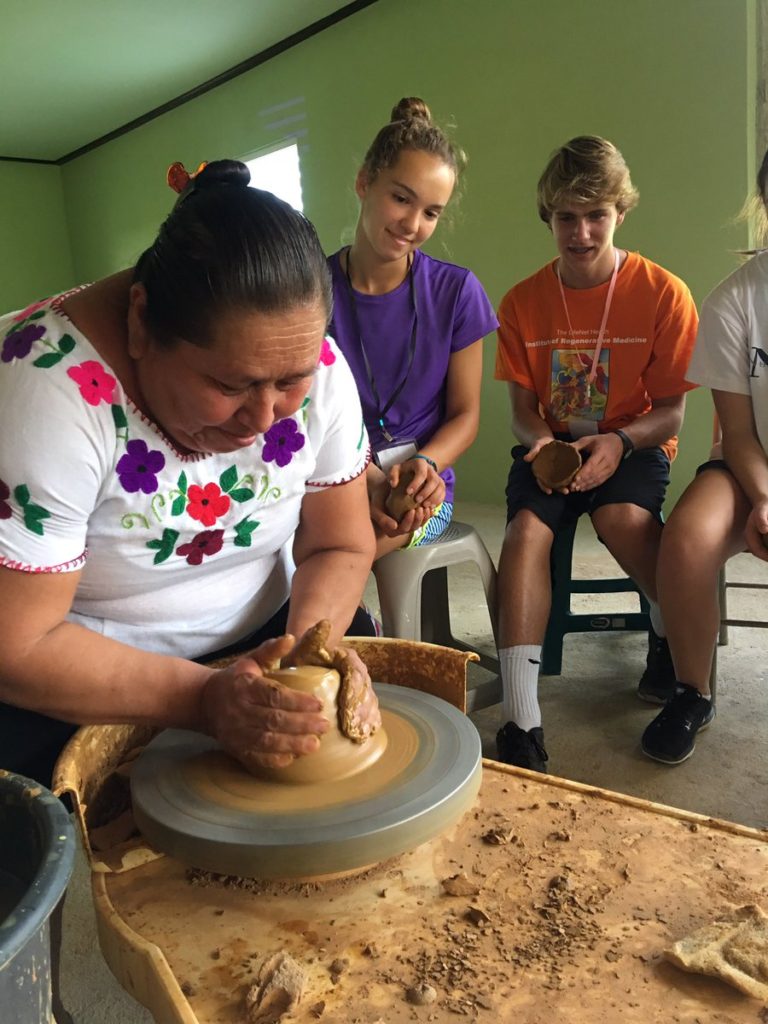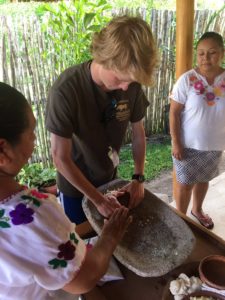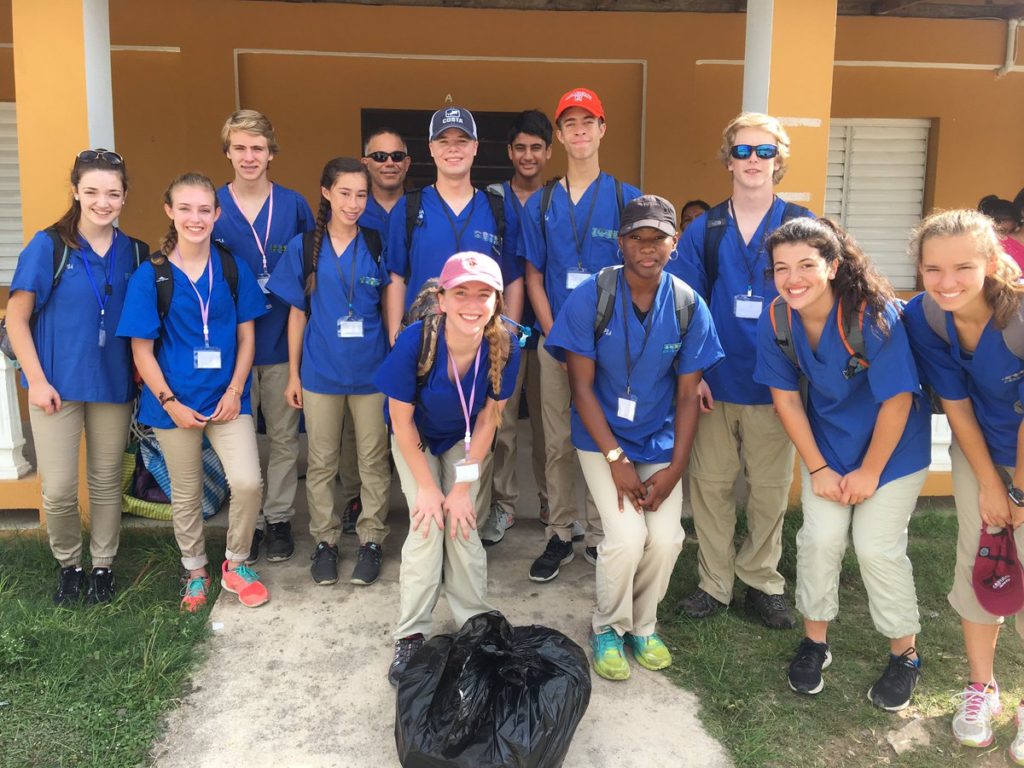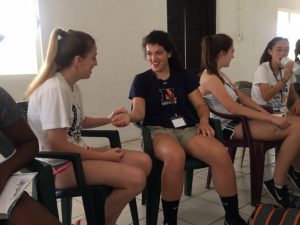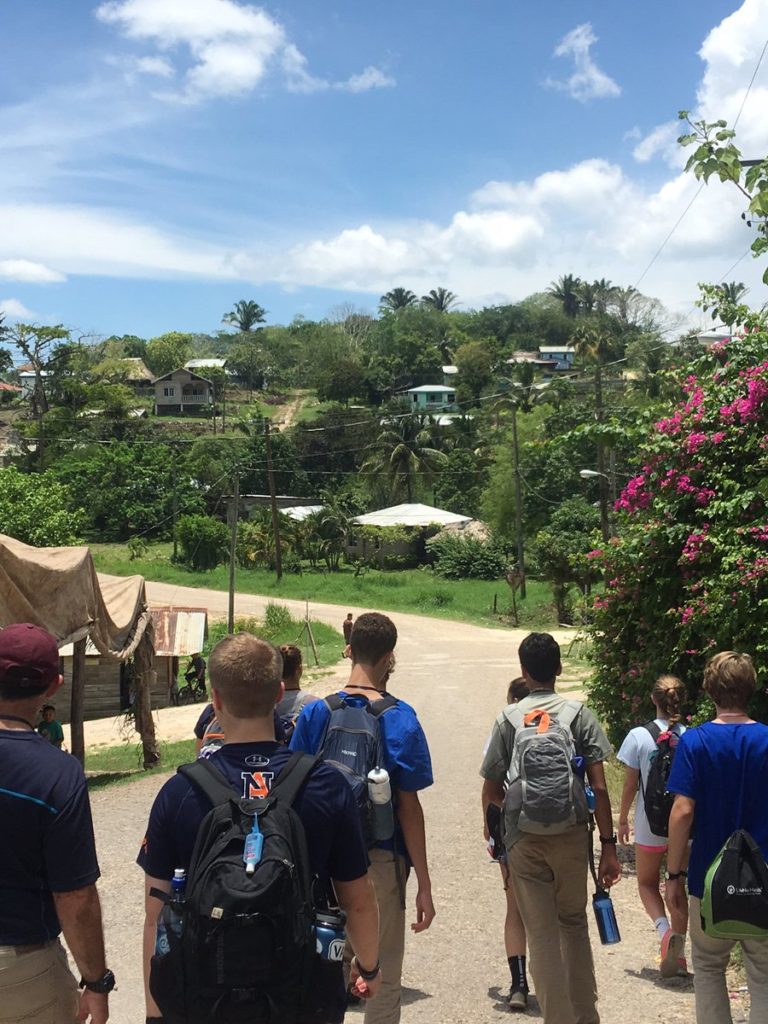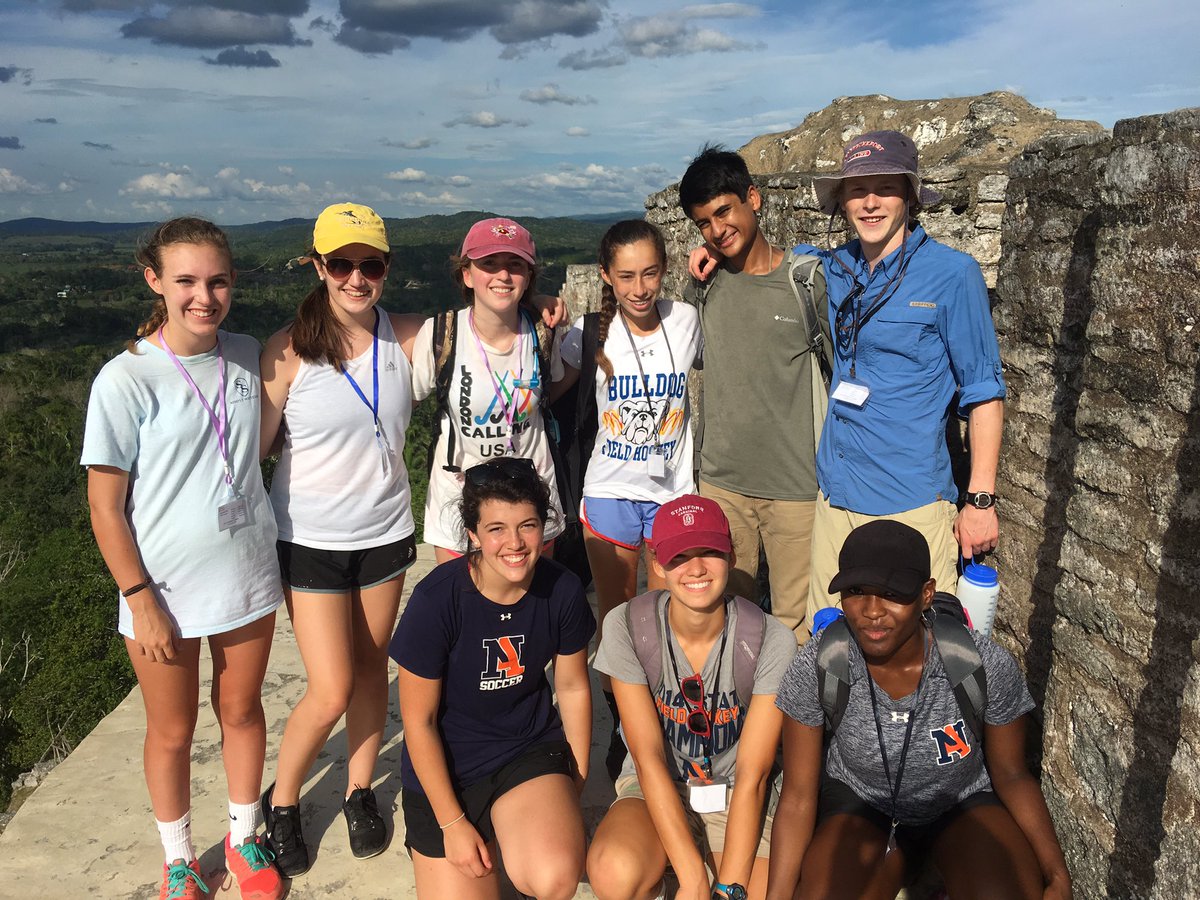Submitted by Ingrid Benkovitz (Class of 2019)

Jon Todd (NA ’99) moderates a panel of UNC graduate students
After an early rise on Friday, we embarked to the University of North Carolina, bright-eyed and bushy-tailed. Jonathan Todd, from the Gillings School of Public Health (and an NA alumus!), put together an incredible morning of intellectual, thought-provoking speakers in the field of Epidemiology.
We first heard from Anna Bauer about her research on Preeclampsia, a fairly common pregnancy complication. The presentation was filled with data that was very helpful in understanding her talk. Next, Christine Gray spoke to us about her research on trauma and abuse among orphans and how the statistics may differ depending on if the children are raised in an institution or a family setting. This conclusive study was able to give us a greater knowledge of the procedure of collecting data in an ethical way and comprehending what it means. Alex Breskin then showed us his research on the Hepatitis C Virus, a virus that was considered non-curable until recently. He was able to emphasize and open our eyes up to the extremity of a somewhat overlooked disease. Jonathan Todd, our last speaker, explained his research about how different doses of statins affect incidence of cardiovascular disease. His presentation was beyond impressive; Norfolk Academy should be proud!!

NA GHF pose with our UNC panel at the Gillings School of Public Health
While all the speakers specialized in different topics, they all had one thing in common: a truly inspiring passion for what they do. Following these presentations, we were lucky enough to have a panel of more students and workers in the field of Epidemiology. With such an intriguing field, the number of questions we had seemed unending, but sadly, the morning did have to come to an end.
In the afternoon, Fellows traveled to the UNC Challenge Course to grow as a team and to push their physical limits! The following reflection of the challenge course is from Andrew Thetford (Class of 2017).
After our morning session at UNC and a working lunch on Franklin Street to finish discussion of our case study, the GHFs headed to the University of North Carolina’s challenge course. This was much different than a lot of us expected. I assumed we would be on something like the Adventure Park at our local aquarium, but it was much different. Most of our time was spent on the “Low Ropes Course”, which consisted mainly of team building exercises. We started off with an icebreaker game, then transitioned quickly to a version of the game “Concentration”. Each set of cards in the game had an important characteristic necessary to working well as a team. Appreciating diversity, equality, hard work, and others were all flipped over after several tries by each fellow.

Gabi Diskin (Class of ’18) explains key components of working as a team
After completing the first game, we were challenged to pick three of the many traits to become our focus for the day. Following much deliberating, we decided on focus, positive attitude, and teamwork because they seemed to cover most of the other traits as well.

Justine Kaskel (Class of ’17) slows the “water” as it flows downhill
Then, we moved on to a more physical and mentally grueling obstacle. We had to use cut PVC pipes to move a golf ball down a hill and into a tiny bucket. This required us to wait for the golf ball to move past our PVC pipe, then quickly transition to the back of the line. It went on like that for a few rotations, with the first person in line continually moving down the hill and towards the back of the line. However, it wasn’t as easy as it sounds. If the ball dropped, we had to walk back up the hill to the starting line and repeat, and we dropped the ball A LOT! It took 45 minutes of a lot of leadership from the ‘17s and others and a bit of yelling from everyone to finally get the ball into the bucket that was no more than 20 yards away.
After each activity, we would sit down and talk about what we did and how we could have done better with each other. We also tried to relate everything back to the three traits we chose at the beginning: focus, positive attitude, and teamwork. Next, we were instructed to pick our favorite quadrilateral (the group consensus was a trapezoid) and we moved into the shade. We formed a big circle, donned blindfolds, and were told to take the pile of rope in the center of the circle and form a trapezoid with it, all while wearing blindfolds. This also took a lot of leadership and talking over one another to succeed, but we made it happen rather quickly.

Ryan Fulmer (’17) helps Ray Fitzgerald (’19) cross the spider web
After another discussion, we walked into the woods a bit towards “The Spider Web”. This was a bunch of strings strung randomly across a big wooden frame built to resemble a huge spider web with large, different sized holes in it. Our challenge was to get everyone from one side of the spider web to the other, without touching the web. This required us to carefully carry people through each hole. However, there was a catch. We could only use each hole twice, so we had to strategize who to put in each hole based on weight and size. This challenge required a lot of brawn as well as brains, so it took a lot of teamwork to lift one fellow up, pass him or her slowly through a hole several feet across, and transport them into the waiting arms of GHFs on the other side, all without touching the strings. Oh, and there was a time limit! The time limit really compressed the amount of time strategizing. We ended up having to put some of the biggest fellows, like Graham Barbour ‘17, into one of the smallest and most awkward holes. After this challenge, we talked about what we did well and what we could’ve done better for a little bit, then we walked down to the zipline.

Climbing to the top!
The zipline is the largest in the Southeast, and sat atop a wooden platform 100+ feet off the ground, connected only by a huge net. In order to go on the zipline, one had to climb all the way up the net before strapping in and jumping. After everyone had ridden the zipline, we finished our day with one last reflective activity where everyone picked card with a picture on it, then described how the picture represented some aspect of our day. While there were the deep, classic people like James Hood ‘19 who said his picture of a road and a far off house represented the challenges we had to face to succeed, there were around seven blunter people who picked pictures of the sun because it was very hot and very muggy outside.
Although it was hot, sweaty, and difficult, I think we as a program finished with a lot of takeaways. We had picked three core values that are necessary to accomplishing our goals, we had completed every challenge, and we had admitted to our faults and come up with alternative, better ideas after doing so. We had grown together as a team, and everyone gained valuable experience as both leaders and followers, not to mention the workout everyone got from carrying each other around in the heat. The Challenge Course was a lot of fun and a great addition to our time at Duke and UNC.
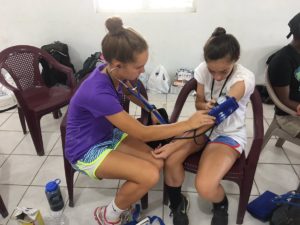 group split up into our three working groups, which we will be in during the house visits, and we each practiced being the doctor, assistant, and the patient as we all got our blood glucose tested. We then worked to perfect our skill at taking blood pressure, which some of us picked up more easily than others. Kaitlyn then talked to us about measuring pulse and respiration, temperature, and BMI. In order to be able to go to the houses and put our newly learned techniques into practice, we had to pass a test. We were each partnered up and took each other’s blood pressure while Vanessa, our GPSA leader, examined us to make sure our procedure was correct. Thankfully, we all passed and we are excited to get to work in the communities tomorrow! After this morning session, we headed home for lunch, but on the way we were eager to stop at the bakery, which is only open a few times per week. Most of us bought either a freshly baked cinnamon roll, a slice of bread pudding, or a sweet bread that were all very delicious.
group split up into our three working groups, which we will be in during the house visits, and we each practiced being the doctor, assistant, and the patient as we all got our blood glucose tested. We then worked to perfect our skill at taking blood pressure, which some of us picked up more easily than others. Kaitlyn then talked to us about measuring pulse and respiration, temperature, and BMI. In order to be able to go to the houses and put our newly learned techniques into practice, we had to pass a test. We were each partnered up and took each other’s blood pressure while Vanessa, our GPSA leader, examined us to make sure our procedure was correct. Thankfully, we all passed and we are excited to get to work in the communities tomorrow! After this morning session, we headed home for lunch, but on the way we were eager to stop at the bakery, which is only open a few times per week. Most of us bought either a freshly baked cinnamon roll, a slice of bread pudding, or a sweet bread that were all very delicious.  observed and participated in the making of corn tortillas which is a Mayan tradition. We mashed the corn and flattened the tortillas and then cooked them on a wood-fire stove. We ate them with coconut oil and salt which made them amazing! After the tasty snack we looked at the Mayan traditional pottery and the various paints they use which are specific to the type of clay used in the pottery. After learning we were able to take part in making pottery and using the wheel where I made a bowl. After our fun day of learning we settled under the gazebo to write our schedules for the school day about tooth brushing and hand washing. – Liz Heckard, GHF ’18
observed and participated in the making of corn tortillas which is a Mayan tradition. We mashed the corn and flattened the tortillas and then cooked them on a wood-fire stove. We ate them with coconut oil and salt which made them amazing! After the tasty snack we looked at the Mayan traditional pottery and the various paints they use which are specific to the type of clay used in the pottery. After learning we were able to take part in making pottery and using the wheel where I made a bowl. After our fun day of learning we settled under the gazebo to write our schedules for the school day about tooth brushing and hand washing. – Liz Heckard, GHF ’18